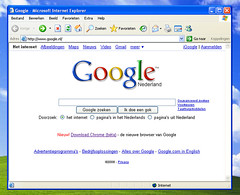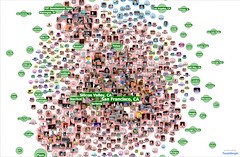By Carl Weiss
Everyone knows that there
only two things in life of which we can all be assured: Death and Taxes. Now one of the billionaires behind the
world’s most popular search engine wants to take a crack at eliminating the first
of these woes. That’s right, Larry Page
of Google has made it his stated goal to cure death. With a war chest in the billions, I guess if
anyone can take a legitimate crack at the Grim Reaper then he can.
Not that the search for an
alternative to death is new. Before he
died in 210 BC, the first sovereign emperor of China, Zhao Zheng spent much of
his time and considerable wealth searching for the elixir of life. So did the legendary Spanish Explorer Ponce
de Leon, who scoured Florida in 1513 for the mythical Fountain of Youth. While
both these and other historical notables had an almost obsessive desire to
cheat death, none of them had access to modern
medicine, DNA research or medical miracles such as transplantation,
bionics or bioprinting that are reshaping the very notion of what it is to be
human. Page on the other hand does have
these and other technologies at his disposal.
And he is incorporating them into a new medical technology company
called Calico.
Short for “California Life
Company,” Calico sounds more like a shelter for cats than a research
company. But when you think about it,
cats are supposed to have nine lives.
And so does Page’s latest venture.
Considered the brainchild of Bill Marris, Google Ventures managing
partner, he became the catalyst for Calico when he noted that hundreds of
companies were focused on curing a variety of medical conditions and
diseases. Yet there were no companies
that focused on the root cause of disease or what caused the body to
progressively fail over time. That we
understood the mechanisms involved in death, largely due to progressive genetic
degradation as the body aged was not an issue.
What was at issue was whether it was possible to not only identify the
specific causes of aging, but to develop treatments that would effectively
slow, stop or even reverse them.
It was with this stated
goal in mind that Arthur Levinson, chairman and ex-CEO of the biotechnology
company Genentech was tapped to head Calico.
Currently chair of Apple Computer’s board of directors, Apple CEO Tim
Cook gave Levinson and Calico his blessing by recently stating, “"For too many of our friends and family, life has been cut
short or the quality of their life is too often lacking. Art is one of the
crazy ones who think it doesn’t have to be this way. There is no one better
suited to lead this mission and I am excited to see the results."
That other people share
the belief that trying to “cure death” is a topic best relegated to the lunatic
fringe along with such things as Bigfoot research is obvious. It didn’t help matters that Larry Page was
quoted in a Time Magazine interview as saying, “We think of solving cancer
as this huge thing that’ll totally change the world. But when you really take a
step back and look at it, yeah, there are many, many tragic cases of cancer,
and it’s very, very sad, but in the aggregate, it’s not as big an advance as you
might think.”
1. Is it possible to reprogram or reset the body’s biological clock?
2. If not, can the next generation of medical technology significantly
extend life?
3. Does bionics represent the ultimate solution?
4.
If it is ultimately possible to
truly cheat death, what are the consequences?
Why Can’t We Live Forever?
To start off with we
have to look at the strides in longevity that have been made by mankind over
the centuries. People born in the year
1800 had an average life expectancy of 35, while those born today have a life
expectancy of 75-80 years. So what’s to
keep this trend from continuing so that in the year 2200 the average human could
live to 150-160 years of age? The reason we live longer than our ancestors has
mostly to do with the fact that we have learned how to combat disease, treat
life threatening conditions such as diabetes, heart disease and cancer, and that
we better understand the nutritional requirements of the human body.
The problem is that
even if we were to cure all disease
and through a combination of radical surgical procedures including
transplantation and artificial organs, be able to effectively treat all known
physical maladies, this would not be sufficient to keep us alive
indefinitely. Like it or not, in each
and every one of us is a ticking time bomb that ensures cell death.
When you get right
down to the basis of life, be that of a human or a simple bacteria, all revolve
around mitosis, the simple act of cell division. Research has shown that healthy cells are
programmed to reproduce for a limited amount of time before they die. In fact, if you take cells from something old
and transplant them into something young, the older cells will still die at
their preordained time. This is why as
people age their bones become brittle, their skin wrinkles, the hair thins and
the body becomes less able to ward off disease.
We are all in a sense programmed to self-destruct.
The phenomenon known
as the Hayflick Limit has been known since 1961 when Dr. Leonard Hayflick, Professor
of Medical Biology at Stanford University, first discovered that human cells
divide a limited number of times in vitro. Author of the book “How and Why We
Age,” first published in 1994, Hayflick demonstrated that during continued
mitosis the end of the chromosome called the Telomere progressively
degrades. This means that through
repeated division, the enzymes that duplicate DNA produce copy errors that
ultimately affects cell replication. He
also showed that when this mechanism broke down it resulted in either cell
death or malignancy. That’s right sports
fans, cancer cells while deadly can live forever.
Enter the Methuselah Mice
Of course that
didn’t stop other researchers from looking for a way of slowing the process
down. While many have espoused the
ingestion of compounds known to halt the production of cell damaging free
radicals, others think that telomerase, an enzyme that mends the protective
covering on cells could be the answer.
The problem is that to date no studies have yet proven that either of
these concepts has been able to significantly increase the lifespan of mammals.
However, a series of
experiments with mice began in 1986 by Roy Walford and Richard Weindruch
reported that by restricting their diet by 30 percent that mice could live up
to twice as long as those fed a normal diet.
Before you start pulling in your belt and breaking out your Adkins Diet
Plan, let me also point out that the same experiment was performed with rhesus
monkeys begun in 1987 by the National Institute on Aging, which while reporting
health benefits did not demonstrate increased lifespan.
Robo-Sapien
What immortality in
essence boils down to is correcting the built-in genetic copy error while
preventing immortal cells from replicating uncontrollably into cancer. When you consider that until recently such
things as gene splicing and gene therapy were the stuff of science fiction then
it’s entirely possible that eventually it might be possible to program our
genes to turn off the self-destruct mechanism.
If that doesn’t work there are other paths to immortality.
Take entrepreneur
and author Ray Kurzweil for instance.
Described as “the restless genius” by The Wall
Street Journal, and “the ultimate thinking machine” by Forbes. Inc. magazine
which ranked him #8 among entrepreneurs in the United States, calling him the
“rightful heir to Thomas Edison.” Ray
was the principal inventor of the first CCD flatbed scanner, the first
omni-font optical character recognition, the first print-to-speech reading
machine for the blind, the first text-to-speech synthesizer, the first music
synthesizer capable of recreating the grand piano and other orchestral
instruments, and the first commercially marketed large-vocabulary speech
recognition. Ray is the recipient of the
$500,000 MIT-Lemelson Prize, the world’s largest for innovation. In 1999, he
received the National Medal of Technology, the nation’s highest honor in
technology, from President Clinton in a White House ceremony. And in 2002, he
was inducted into the National Inventor’s Hall of Fame, established by the U.S.
Patent Office.
Among
other claims, Ray has also postulated that by 2045, an event known as "the
singularity" will occur, allowing humans to fully integrate their psyches
with machines. Were that to happen, all any of us who could afford it would
have to do to cheat death would be to upload what we call our personality into
that of a robot and voila, instant immortality.
 So
enamored with this concept was he that Russian billionaire Dmitry Itskov has
already begun construction of a robotic replica of himself so that once the
technology of mind transfer has been worked out he can be the first billionaire
on the block to merge with a machine.
Since he is currently 32 years old this will make him only 55 years old
in 2045, which gives him a certain amount of wiggle room should the technology
take a bit longer to become a reality.
So
enamored with this concept was he that Russian billionaire Dmitry Itskov has
already begun construction of a robotic replica of himself so that once the
technology of mind transfer has been worked out he can be the first billionaire
on the block to merge with a machine.
Since he is currently 32 years old this will make him only 55 years old
in 2045, which gives him a certain amount of wiggle room should the technology
take a bit longer to become a reality.
What Happens if We Get it Right?
Just like the Wright
Brothers being the first to fly with wings, or Neil Armstrong standing on the
surface of the Moon, if mankind puts its mind to a problem then there is a high
probability that we can solve most any problem.
The real problem as I see it isn’t a matter of technology. The problem is more about practicality. In other words, what happens if we get it
right?
Think about the
ramifications of immortality. Currently
there are more than 7 billion people living on planet Earth. Even taking into consideration such things as
accidental death and homicide, if we all woke up tomorrow morning with the
realization that we would never die, how long would it be before we all starved
to death? Considering that it currently takes
our global population of mere mortals less than 40 years on average to double, this
would ensure the fact that within a generation or two we would all face
starvation since I don’t know of any technology that would enable us to keep 20
billion people fed and we haven’t yet invented starships capable of
interstellar travel.
Of course, like most
other technologies, it will in all likelihood take a number of years for the
benefits of immortality to reach the masses.
In which case, this means that only the wealthy will be able to afford
such a luxury. This could also prove
problematic since this would enable the super-rich to consolidate their power
which is usually the way in which most revolutions have been fomented since
human civilization began.
Even for those in
possession of immortality, it could prove more of a curse than a gift. A number of fictional works have been penned
over the years about the perils associated with eternal life. In the Picture of Dorian Gray, the main
character barters his soul for eternal youth only to pay the price in depravity
and despair down the road as everyone around him ages and dies.
As usual with human knowledge,
wisdom in many cases takes a back seat. If the Wright Brothers had foreseen
what would become of their invention, where forty short years later entire
cities were being carpet bombed and millions of civilians killed, would they
have stuck to building bicycles? Who
knows, but for what it’s worth if it came down to a choice between curing death
or taxes, I for one would rather see all of us a little richer rather than a whole lot older.
Carl Weiss is president of WSquared media Group, a digital media agency in Jacksonville, Florida. He is also co-host of Working the Web to Win
which can be heard on Blog Talk Radio every Tuesday at 4 pm Eastern and seen on
YouTube.

















